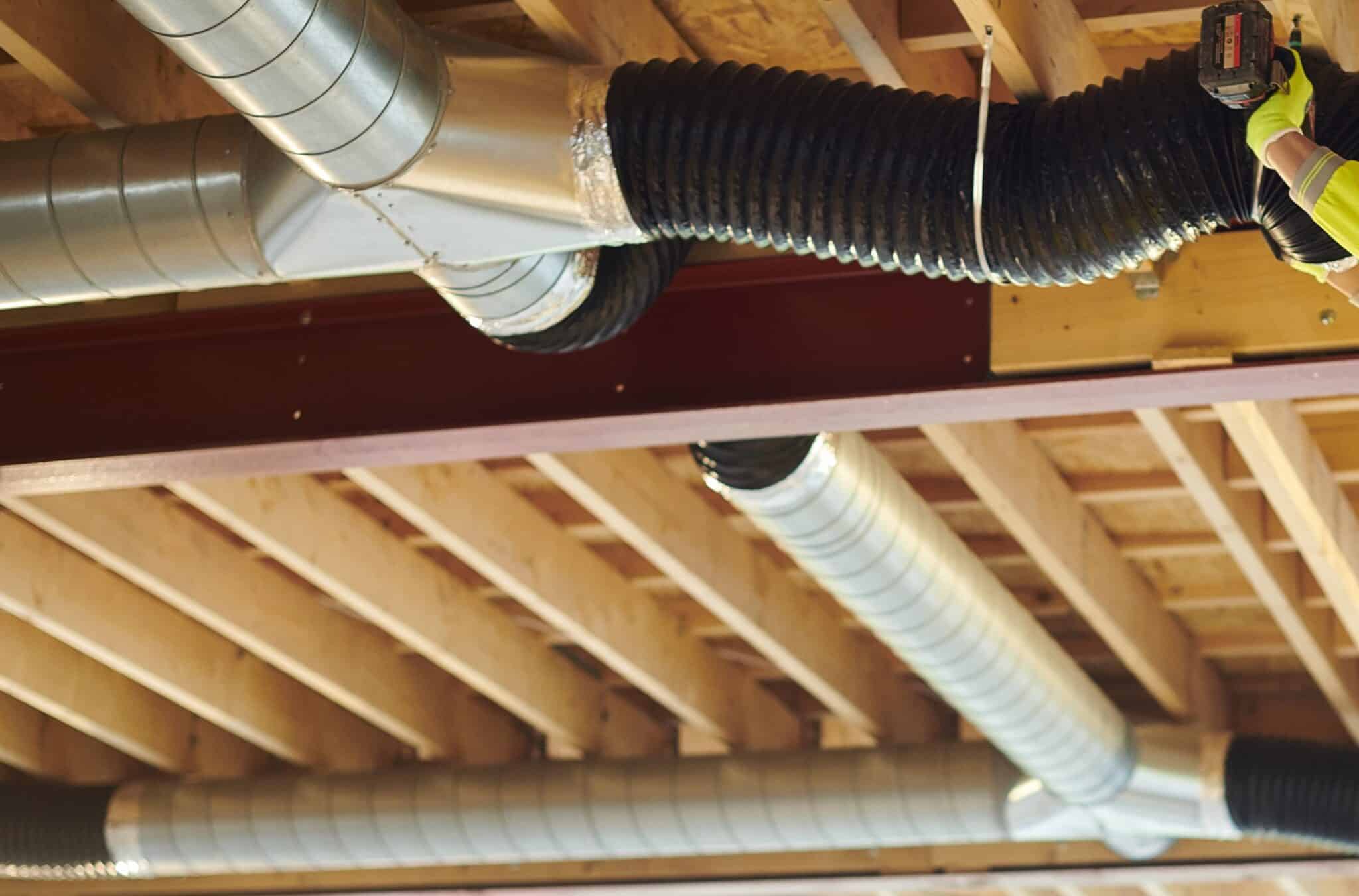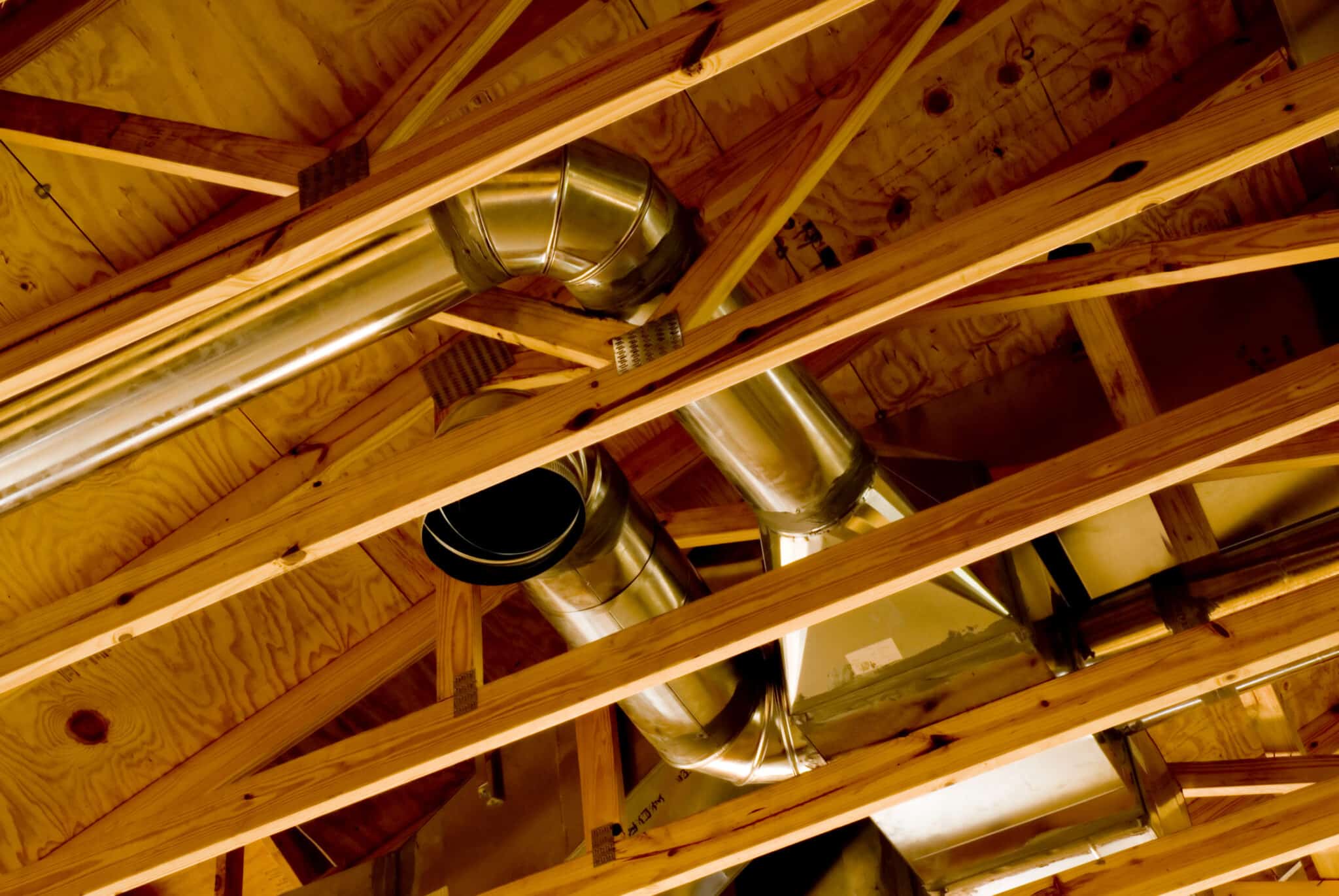- Focus on Climate-Specific Design: Tailor your ductwork to meet the unique challenges of coastal environments.
- Material Durability: Choose materials that resist corrosion from salt air.
- Optimized Airflow: Ensure proper air distribution for comfort and energy efficiency.
- Energy Efficiency: Size your HVAC unit correctly to handle coastal climates.
- Ventilation and Air Quality: Incorporate fresh air ducts to manage humidity and improve air quality.
- Insulation and Sealing: Prevent moisture buildup and energy loss through proper insulation techniques.
Why is climate-specific ductwork design crucial for coastal homes? Coastal environments present unique challenges that can significantly impact the performance and lifespan of your HVAC system. From high humidity levels to salt-laden air, these conditions can lead to corrosion, reduced efficiency, and even system failure if not properly addressed.
Designing ductwork specifically for these climates ensures not only the longevity of your system but also maintains indoor comfort and energy efficiency. By understanding the specific demands of coastal environments, you can select materials, design layouts, and implement strategies that will keep your HVAC system running smoothly, no matter the weather outside.
Importance of Climate-Specific Ductwork Design
Have you ever considered how coastal weather affects your home’s HVAC system? When designing ductwork for coastal homes, it’s essential to account for the unique climate challenges these environments pose. Unlike inland regions, coastal areas face higher humidity levels, increased salt content in the air, and strong winds that can all impact the performance and durability of your ductwork.
One of the key reasons for focusing on climate-specific design is the potential for corrosion. Salt air can corrode duct materials over time, leading to leaks, reduced efficiency, and even the need for premature replacement. By choosing the right ductwork design materials, such as corrosion-resistant metals or treated flex ducts, you can greatly extend the lifespan of your ductwork.
Another critical factor is humidity. High humidity levels common in coastal regions can lead to condensation within the ducts, which may cause mold growth, reduce air quality, and decrease system efficiency. Proper insulation and sealing of ducts are vital in preventing these issues, ensuring that your HVAC system runs smoothly and safely.
Moreover, coastal homes often experience varying air pressures due to wind patterns, which can affect airflow dynamics within your home. A well-designed duct system will account for these pressures, ensuring consistent and comfortable temperatures throughout the house.
Ductwork Design: Challenges Unique to Coastal Environments
What makes coastal environments so tough on ductwork? Coastal homes face specific challenges that require careful planning and specialized materials to ensure the longevity and efficiency of HVAC systems. From high humidity to the corrosive effects of salt air, these factors can significantly impact the performance of your ductwork.
- High Humidity Levels:
Coastal areas are known for their elevated humidity, which can lead to condensation forming inside ducts. This moisture can cause a host of problems, including mold growth, which not only harms indoor air quality but also poses health risks to the home’s occupants. Additionally, the moisture can reduce the efficiency of the HVAC system by forcing it to work harder to maintain desired indoor temperatures. - Salt Air Corrosion:
Salt air is another significant concern for coastal homes. Salt particles in the air can lead to the corrosion of metal ducts, weakening the structure and causing leaks. Over time, this corrosion can severely damage the ductwork, leading to costly repairs or even the need for complete system replacement. Therefore, selecting materials that can withstand salt air exposure is crucial. - Strong Wind and Air Pressure Variations:
Coastal regions often experience strong winds and rapid changes in air pressure, which can disrupt the balance of airflow within your home. Poorly designed duct systems may struggle to maintain consistent air distribution, leading to hot and cold spots and reducing overall comfort. To counteract this, ductwork design must be align with the local wind patterns and pressure variations in mind. - Potential for Flooding:
In addition to these factors, coastal homes may also be at risk of flooding, which can damage ductwork, especially if it is installed in lower areas like basements or crawl spaces. Ensuring that ducts are properly elevated and sealed can help protect them from floodwaters and the associated damage.
Ductwork Design: Understanding Airflow Dynamics in Coastal Regions
How does coastal air affect your home’s airflow? Understanding airflow dynamics in coastal regions is critical when designing an effective HVAC system. The unique environmental factors—such as air pressure, humidity, and the presence of salt air—can significantly influence how air moves through your home’s ductwork, impacting both comfort and system efficiency.
- Air Pressure and Humidity Considerations:
Coastal regions often experience fluctuating air pressures due to their proximity to large bodies of water. These variations can create challenges in maintaining balanced airflow throughout the home. For instance, higher outside pressure might push more air into the home, potentially disrupting the designed airflow patterns within your ducts. Proper design adjustments, like installing dampers or adjusting duct sizes, can help manage these fluctuations and ensure a consistent, comfortable indoor environment.
Humidity is another critical factor. High humidity levels common in coastal areas can affect the density of the air, making it more difficult for your HVAC system to move air through the ducts. This can lead to uneven cooling or heating, with some rooms feeling stuffy or damp. Effective duct insulation and moisture control measures are essential to mitigate these effects, helping maintain consistent air quality and comfort levels.
- Impact of Salt Air on Duct Materials:
Salt air is particularly corrosive to the metals commonly used in ductwork. Over time, this corrosion can lead to leaks, reducing the efficiency of your HVAC system and increasing energy costs. It can also create small gaps in the ductwork where air can escape, further disrupting airflow and leading to inconsistent temperatures in different parts of the home.
To combat this, selecting the right materials for your ducts is crucial. Materials like galvanized steel, coated with anti-corrosive layers, or even non-metallic options such as certain types of flex ducts, can offer better resistance to salt air. This ensures that the ducts remain intact and efficient over time, even in the harsh coastal environment.
Key Components of Effective Ductwork Design
What are the essential elements for ductwork design in coastal homes? When it comes to designing an HVAC system that performs well in coastal environments, several key components must be carefully considered. These elements—duct size, shape, and material—play a crucial role in ensuring efficient airflow, durability, and overall system performance.
- Duct Size and Shape for Optimal Airflow:
One of the most critical aspects of ductwork design is determining the correct size and shape of the ducts. If the ducts are too small, they can restrict airflow, leading to inefficient heating or cooling and increased energy consumption. Conversely, oversized ducts may cause air to move too slowly, reducing the system’s ability to maintain a consistent temperature throughout the home.
The shape of the ducts also matters. Round ducts are generally more efficient for airflow, but space constraints may require the use of rectangular or oval ducts. The goal is to minimize air resistance while ensuring that the ducts fit within the architectural constraints of the home. Properly sized and shaped ducts will help maintain even airflow, reducing the likelihood of hot or cold spots in the home.
- Material Selection: Metal vs. Flex Ducts:
The choice of materials for your ductwork is especially important in coastal homes due to the corrosive effects of salt air. Traditional metal ducts, such as galvanized steel, are commonly used because of their strength and durability. However, in coastal environments, these metals must be treated with anti-corrosive coatings to prevent rust and deterioration over time.
Alternatively, flex ducts, made from a combination of plastic and metal, offer flexibility in installation and can be more resistant to corrosion. They are also easier to install in tight spaces, making them a popular choice for certain parts of the duct system. However, flex ducts must be installed carefully to avoid kinks or bends that can restrict airflow.
Ductwork Design: Sizing Your HVAC Unit for Coastal Homes
Why is the correct HVAC unit size so crucial for coastal homes? Sizing your HVAC unit properly is essential for maintaining comfort and energy efficiency, especially in coastal climates. An HVAC system that’s too small will struggle to cool or heat your home effectively, while one that’s too large can lead to short cycling, increased energy costs, and wear and tear on the unit.
- Calculating the Right Capacity for Different Home Sizes:
The first step in choosing the right HVAC unit is accurately calculating the required capacity, measured in BTUs (British Thermal Units). This calculation considers various factors, including the size of your home, the number of windows, insulation levels, and, importantly, the local climate.
In coastal regions, where humidity is high and temperatures can be more extreme, you may need a unit with a higher capacity than what’s typically required for similar-sized homes in inland areas. The goal is to ensure that the unit can maintain a comfortable indoor environment without overworking, which can lead to higher energy bills and reduced system longevity.
- Importance of Energy Efficiency in Coastal Climates:
Energy efficiency is a critical consideration when selecting an HVAC unit for a coastal home. Coastal climates often have high humidity levels, meaning the HVAC system must work harder to remove moisture from the air while cooling. This extra effort can significantly impact energy consumption, making it essential to choose a system with a high SEER (Seasonal Energy Efficiency Ratio) rating.
A higher SEER rating indicates a more energy-efficient unit, which is particularly important in coastal regions where HVAC systems may run more frequently due to the weather conditions. Additionally, modern energy-efficient systems often come with features like variable speed compressors and smart thermostats, which can further enhance performance and reduce energy usage.
- Balancing Initial Costs and Long-Term Savings:
While a higher-capacity, energy-efficient HVAC unit might come with a higher upfront cost, it’s important to consider the long-term savings it can offer. Properly sizing your unit to meet the demands of your coastal home not only ensures comfort but also helps reduce energy costs over time.
Moreover, investing in a well-sized and efficient HVAC system can extend the lifespan of the unit, reducing the likelihood of expensive repairs or replacements down the road. This balance between initial investment and long-term savings is key to making an informed decision that benefits both your comfort and your wallet.

Choosing the Best Ductwork Design Material for Coastal Homes
What materials should you choose for ductwork in coastal climates? Selecting the right duct material is crucial for ensuring the durability and efficiency of your HVAC system, especially in coastal homes where environmental factors like humidity and salt air can accelerate wear and tear.
- Corrosion Resistance in High-Humidity Environments:
One of the primary concerns in coastal regions is the corrosive nature of salt-laden air. Over time, this can cause traditional metal ducts to rust, leading to leaks and reduced efficiency. To combat this, it’s essential to choose materials that offer strong resistance to corrosion.
Galvanized steel, coated with anti-corrosive layers, is a common choice because of its durability and ability to withstand harsh conditions. Alternatively, aluminum ducts, which are naturally resistant to corrosion, can be a viable option, though they might come at a higher cost. For areas prone to the highest moisture exposure, non-metallic materials like plastic or fiberglass ducts are also worth considering, as they do not corrode and can provide a longer-lasting solution in challenging environments.
- Comparing Lifespan and Maintenance Needs:
The lifespan of duct materials varies significantly, especially in coastal settings. Metal ducts, while strong, may require more frequent inspections and maintenance to check for signs of corrosion, especially if not properly coated. Flex ducts, made of plastic and reinforced with metal wire, offer flexibility in installation and are less susceptible to rust. However, they can be more vulnerable to physical damage and may require more careful handling during installation and maintenance.
Non-metallic options like fiberglass ducts provide excellent insulation and are resistant to moisture and salt air, making them low-maintenance and long-lasting. However, they might not be as durable in high-traffic areas or where the ducts are exposed to physical stress.
Customizing Ductwork Design for Savannah, Port Royal, and Hardeeville
How can you tailor ductwork design for specific coastal areas like Savannah, Port Royal, and Hardeeville? Each of these coastal regions presents unique climate challenges that require a customized approach to ductwork design. Understanding the local climate and adhering to regional building codes and standards are essential for creating an efficient and durable HVAC system that meets the needs of homeowners in these areas.
- Climate Considerations in Savannah, Port Royal, and Hardeeville:
These coastal areas are characterized by hot, humid summers, mild winters, and significant exposure to salt air, all of which can impact HVAC performance and duct longevity.
- Savannah experiences high humidity levels year-round, with the summer months seeing particularly intense heat and moisture. Ductwork design in Savannah needs to prioritize effective insulation to prevent condensation buildup, which can lead to mold growth and reduced system efficiency.
- Port Royal faces similar humidity challenges, compounded by frequent storms and coastal winds. Ducts in this area must be designed to handle fluctuating air pressures and should be well-sealed to prevent moisture intrusion and salt air from accelerating corrosion.
- Hardeeville, while slightly inland, still experiences the effects of coastal weather, with high humidity and occasional strong winds. Here, the focus should be on balancing effective air distribution with robust insulation and sealing practices to prevent energy loss and protect against the humid environment.
In all three locations, using corrosion-resistant materials is crucial due to the persistent exposure to salt air. Options like coated galvanized steel or non-metallic ducts can offer the durability needed to withstand these harsh conditions.
Duct Design: Insulation and Sealing in Coastal Homes
Why is duct insulation and sealing so important in coastal homes? Coastal environments are notorious for high humidity levels and fluctuating temperatures, which can wreak havoc on your HVAC system if your ductwork isn’t properly insulated and sealed. Effective insulation and sealing are crucial not only to prevent moisture buildup and energy loss but also to protect your ductwork from corrosion, ensuring long-term efficiency and durability.
- Preventing Moisture Buildup and Energy Loss:
In coastal homes, where humidity levels are often high, moisture buildup inside the ducts can become a serious issue. This moisture can lead to the growth of mold and mildew, compromising indoor air quality and potentially causing health problems for your household. Moreover, moisture inside the ducts can reduce the efficiency of your HVAC system, as it must work harder to maintain the desired indoor temperature.
Proper insulation is key to preventing condensation from forming on the ducts. By keeping the temperature of the duct surfaces above the dew point, insulation helps to avoid the conditions that lead to moisture buildup. Closed-cell foam insulation is particularly effective in coastal climates, as it provides a moisture barrier while also offering excellent thermal resistance. Fiberglass insulation is another good option, especially when paired with a vapor barrier to prevent moisture penetration.
- Best Practices for Sealing to Avoid Corrosion:
Sealing your ductwork is just as important as insulation, especially in coastal environments where salt air can accelerate corrosion. Any gaps or leaks in the ductwork not only allow conditioned air to escape, reducing system efficiency, but also provide entry points for corrosive salt air to infiltrate and damage the ducts.
To avoid corrosion, it’s essential to use high-quality sealants that are specifically designed for use in high-humidity environments. Mastic sealant, applied to all duct joints and seams, is an excellent choice due to its durability and resistance to moisture. In some cases, using metal-backed tape, known as foil tape, can also be effective, but it’s crucial to ensure that it adheres well and provides a complete seal.
Ductwork design for coastal homes requires careful consideration of the unique environmental challenges these areas present. By focusing on corrosion-resistant materials, proper insulation, and sealing techniques, you can ensure your HVAC system remains efficient and durable. Whether you’re in Savannah, Port Royal, or Hardeeville, customizing your ductwork design to meet local climate conditions and building codes is key to maintaining comfort and energy efficiency in your coastal home.

FAQ: Ductwork Design for Coastal Homes
-
How does coastal humidity affect ductwork?
Coastal humidity can lead to condensation inside ducts, causing mold growth and reducing system efficiency. Proper insulation is crucial to prevent these issues.
-
What materials last longest in coastal environments?
Corrosion-resistant materials like galvanized steel with coatings, aluminum, or non-metallic options such as fiberglass are ideal for coastal ductwork due to their durability in salty air.
-
How can I improve airflow in an older coastal home?
Upgrading insulation, sealing leaks, and possibly resizing or rerouting ducts can improve airflow in older homes.
-
Why is duct sealing important in coastal areas?
Ductwork design sealing prevents salt air from entering and corroding the ducts, while also ensuring efficient air distribution and reducing energy loss.
-
How often should ductwork be inspected in coastal homes?
It’s recommended to inspect ductwork annually to check for signs of corrosion, leaks, and insulation issues, especially in coastal environments.











